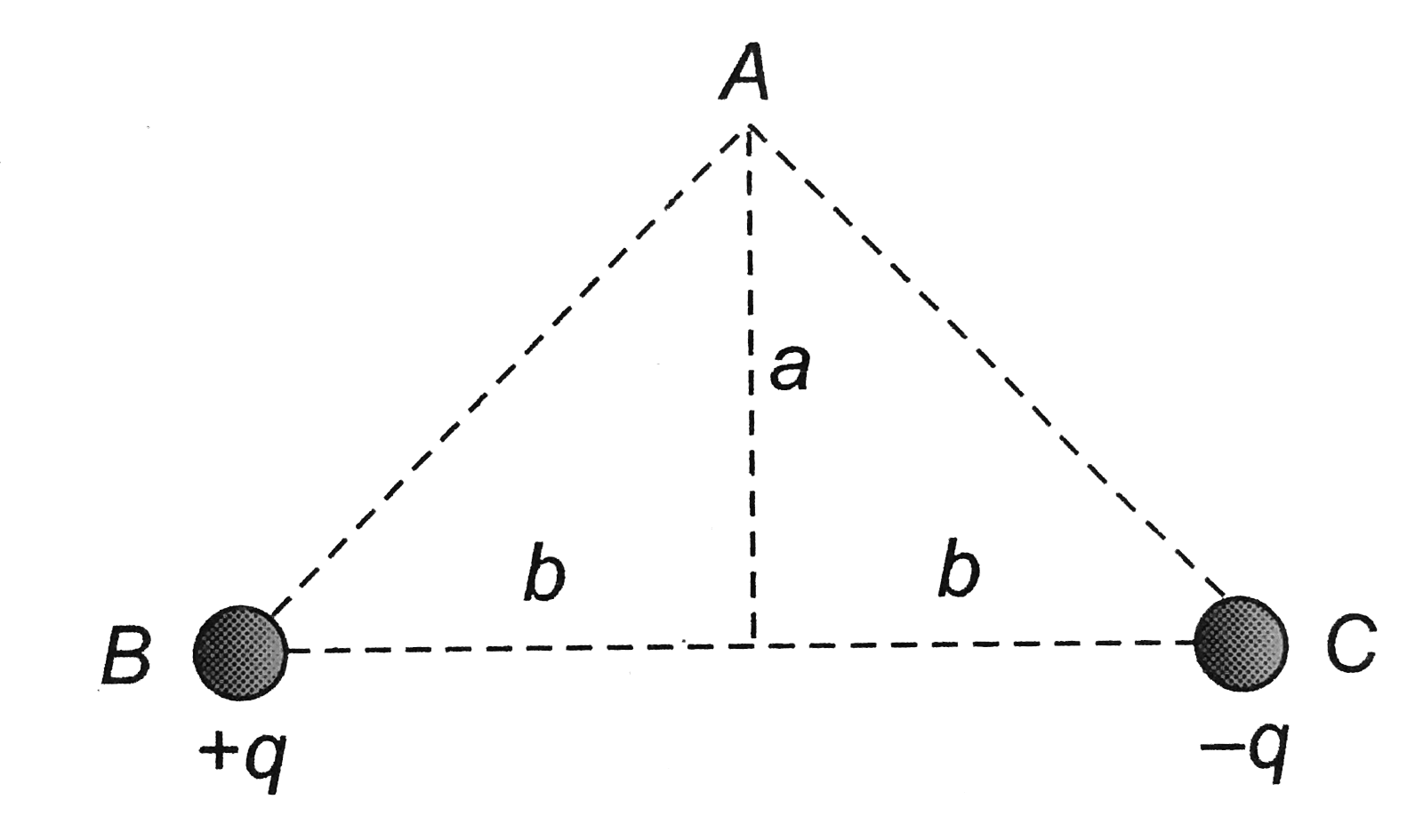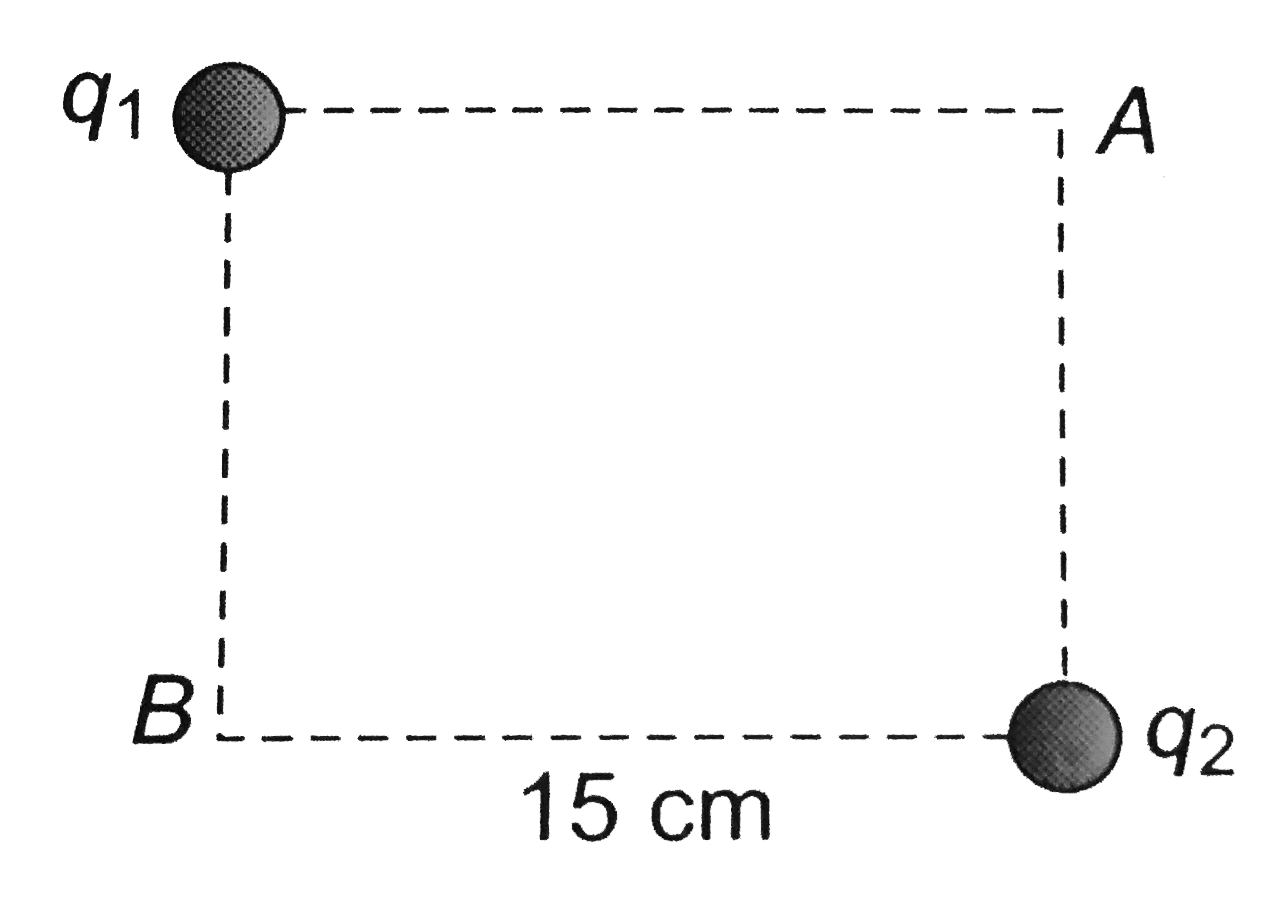Complete Solutions to Check point 2.1 of chapter ELECTROSTATIC POTENTIAL AND CAPACITORS of Class 12 book with complete answers and questions
| Class 12 | PHYSICS |
| Chapter | ELECTROSTATIC POTENTIAL AND CAPACITORS |
| DC PANDEY NEET | Check point 2.1 |
| Number Of Questions | 15 |
| Academic Year | 2023-24 |
Find the work done by some external force in moving a charge `q=4 muC` from infinity to a point, where electric potential is `10^(4)V`
View SolutionEqual charges are given to two spheres of different radii. The potential will
View SolutionThe electric potential at a point in free space due to a charge `Q` coulomb is `Q xx 10^(11)` volts. The electric field at that point is
View SolutionIn an hydrogen atom, the electron revolves around the nucleus in an orbit of radius `0.53 xx 10^(-10) m`. Then the electrical potential produced by the nucleus at the position of the electron is
View SolutionThree charges `2q, -q, and -q` are located at the vertices of an equilateral triangle. At the center of the triangle,
View SolutionIn a region of constant potential
View SolutionThe work done in bringing a `20` coulomb charge from point `A` to point `B` for disatnce `0.2 m` is `2 J`. The potential difference between the two points will be (in volt)
View SolutionAs shown in the figure, charges `+q and -q` are placed at the vertices `B` and `C` of an isoscles triangle. The potential at the vertex `A` is

View SolutionIn the rectangle, shown below, the two corners have charges `q_(1) = - 5mu C` and `q_(2) = + 2.0 mu C`. The work done in moving a charge `+3.0 mu C` from `B to A` is (take `1//4 4pi epsilon_(0) = 10^(10) N-m^(2)//C^(2))`

View SolutionTwo point charges `-q` and `+q` are located at points `(0,0-a)` and `(0,0,a)` respectively. The electric potential at point `(0,0,z)`is `(Z gt a)`
View SolutionTwo plates are `2cm` apart, a potential difference of `10` volt is applied between them, the electric field between the plates is
View SolutionAt a certain distance from a point charge, the field intensity is `500 V//m` and the potentil is `-3000 V`. The distance to the charge and the magnitude of the charge respectively are
View SolutionTwo charges of `4 mu C` each are placed at the corners `A` and `B` of an equilaternal triangle of side length `0.2 m` in air. The
electric potential at `C` is `[(1)/(4pi epsilon_(0)) = 9 xx 10^(9) (N-m^(2))/(C^(2))]`
View SolutionThe electric potential `V` at any point `(x,y,z)`, all in meters in space is given by `V= 4x^(2)` volt. The electric field at the point `(1,0,2)` in volt//meter is
View SolutionThe electric potential `V` is givne as a function of distance `x` (metre) by `V = (5 x^(2) + 10x - 9)` volt. Value of electric field at `x = 1 `is
View Solution
Check point 2.1 questions and complete solutions for chapter ELECTROSTATIC POTENTIAL AND CAPACITORS of DC PANDEY PHYSICS (HINGLISH) of Class 12